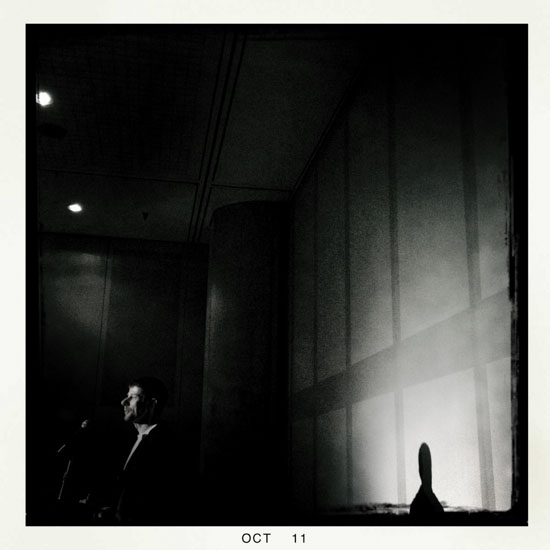In his paper “From Memory To Experience: The Smartphone, A Digital Bridge,” Stephen Mayes makes intriguing remarks about how smartphones not only change the profession of photojournalism (Stephen is Managing Director at VII Photo and was Secretary to the International Jury at World Press Photo Foundation for nine years). He also describes how camera phones change the way non-professionals interact with the world. The smartphone image, Stephen suggests, escapes the burden of being a document of memory. And yet, layer upon layer — of momentary smart-phonic imagery, experiences captured though not recorded in archival spirit — the stream of images creates a story. When I asked Stephen to provide me with a photo to go along with his text, he described himself to me as “a believer, not a practitioner.” As a practitioner but not a believer, I found that interesting. And I couldn’t help but think of a metaphor that Homer uses in the Iliad: “Like the generation of leaves, such is that of men…” See excerpts from Stephen’s paper below, followed by the full text. He presented it to the Toronto Photography Seminar in September 2012, and The British Journal of Photography published an edited version in their October 2012 edition. Stephen will moderate a panel discussion about Smartphone photography at the VII Gallery NY on October 18th. Many thanks to Ron Haviv and Ed Kashi from VII for sharing (smartphone)photos of the believer himself. JH
[…] The Smartphone image is escaping the burden of being a document of memory. As a streaming phenomenon it’s not designed to be indexed and stored as evidence for future reference; once consumed it’s rapidly washed over and replaced by the next fragment, each contributing to the viewer’s current understanding of the world. The Smartphone image is no longer about creating memory as much as it’s about shaping experience, each component adding to the understanding of the next but not existing as discrete packaged moments of (past) time.
[…] There are things about this tool that are special, which in combination make the Smartphone unique. The portability, the invisibility, the connectivity, the interactivity, the intimacy, the ubiquity, the multifunctionality, and the simplicity make the Smartphone something new.
[…] While writing this paper I spent a week in Scotland with my sister in law and to my surprise she’s become a prolific photographer. In thirty years I’ve never seen her make a picture, but suddenly she’s seeing the world through the lens of her iPhone. She is approaching every situation through her phone, using it as the entry point to each experience, thinking about where she is as a close-up or a landscape, as a colour or as a as moment. Some images she shared with her absent friends and daughter, some she made purposefully for a forthcoming PowerPoint presentation and some she filed just because was pleased with the result. I asked her why and she explained that for the first time in her life she had a tool that gave her permission to express herself without needing to be an expert. Holding a camera makes her self-conscious and nervous but holding the iPhone makes her free; if there was an equivalent musical tool maybe she would use it but the Smartphone wins because it’s all about the experience, the image and the sharing.
[…] Six billion mobile subscribers are transforming the meaning of the photographic image whether professionals choose to participate or not. The Smartphone is not just another camera; it’s changing our understanding of what a camera does and is contributing to a redefinition of our social structures.
It’s interesting to note that when the Leica 35mm camera was introduced nearly 90 years ago it was thought to be Continue reading “From Memory To Experience: The Smartphone, A Digital Bridge”


